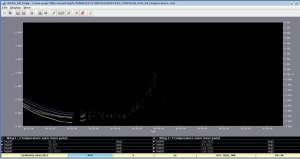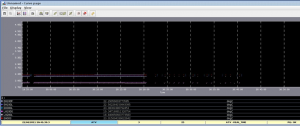Editor’s note: Early this morning, ESA’s Charlotte Beskow sent in a final summary on mission team activities during the past few hectic days.
Time is up, as they say
Johannes Kepler – in the shape of ATV-2 – has ceased to be. And what did we achieve during ATV-2’s stay in orbit?
- Six releases of oxygen (total of ca. 78 kg of O2)
- Six attitude control sequences for the ISS
- Seven reboosts of the ISS
- One debris avoidance manoeuvre
- Delivery of 850 kg of Russian fuel
- The crew unloaded close to 1600 kg of cargo and then back-loaded 1200 kg of trash
Between docking on 24 February and undocking on 19 June, Johannes Kepler performed all task requested to perfection (well, almost: one on-board item of equipment failed at the end of the mission, but instead of replacing it with the spare, the ISS management team opted to continue in a slightly degraded configuration).
Yesterday, at about 20:48 GMT (22:48 CEST) whatever was left of ATV – and it should not have been much – hit the South Pacific Ocean. No one was there to watch but the crowd watching from the ATV-CC was, if not numerous, at least dedicated.
The final days have been busy!
The final operations consisted of hatch closure 19 June (Sunday), followed by undocking on 20 June.
On 20 June, the night shift was relaxed and half the Engineering Support Team here at ATV-CC went outside to watch the ISS pass overhead at 23:00. We could not see ATV due to all the lights from a parking lot by the building, but friends in Paris saw it as a small bright object, traversing the sky ahead of the ISS.
This was followed by the deorbiting yesterday evening.
The first deorbit engine burn went well; everybody was relaxed but still focused. It is a bit like paying golf. “It ain’t over until the last ball has rolled into the final hole…” – meaning don’t relax too much until you are one-hundred-percent sure that it is over.
The Engineering Support Team took a break after the first boost and had dinner outside. Sounds nice, yes? Well, you have not seen the depressing lunch room located, un-sunlit, in the cellar of the ATV Control Centre building. Since we spend our days in the control room (also with no windows) we take every opportunity to get outside for a bit of daylight!
The final boost started at 20:04 GMT; it lasted 14 minutes and after that point there was absolutely nothing more we could do. The Engineering Support Team and Flight Control Team rooms rapidly filled up, and everybody started talking and relaxing – we all followed Johannes’ progress towards the Earth as best as we could, i.e., via the telemetry.
We also had a visual projection running that modelled Johannes based on the telemetry we were receiving. About 10 minutes after the end of the boost, the tumbling manoeuvre took place. This helps ensure that ATV reenters and burns up – but it also means that we loose continuous communication.
As telemetry was lost, here is what we saw on our screens (images to follow shortly – Ed.):
Solar array temperature
ATV cabin temperature
You can barely discern the dots showing the telemetry received between 20:25 and 20:41 GMT.
ATV’s fall
At 20:29 GMT, the altitude was about 245 km. At 20:32 GMT, it was 200 km, and at 20:41 GMT, it was about 78 km. At this altitude breakup would occur; this is when we finally lost all telemetry.
Mission end was greeted with a big round of applause here in the control centre – for a mission well done!
So, that is the end of ATV2!
In less than 10 days, we will inspect the new ATV-3, Edouardo Amaldi, hereafter called “Little Eddie,” together with the NASA crew office and at least one astronaut.
As mentioned previously: The days are just packed!!
Greetings from a very happy Charlotte



 Automated Transfer Vehicle page
Automated Transfer Vehicle page ATV blog archive
ATV blog archive
Discussion: 2 comments
Thanks for the post – both the overall mission review and the pictures showing telemetry data. I’m sure I’m not the only engineer working in a non-space industry who is fascinated with the kind of data you receive and the procedural detail of commanding a spacecraft! Does this data get archived or published anywhere?
I enjoy my own area of engineering very much, but operating a spacecraft would be one of the things that would tempt me away…
thanks for an interesting web-site / blog.
Can’t wait til ATV3 is hoisted aloft.